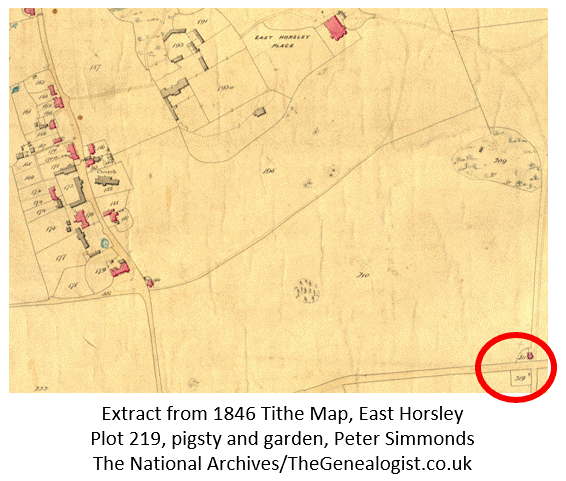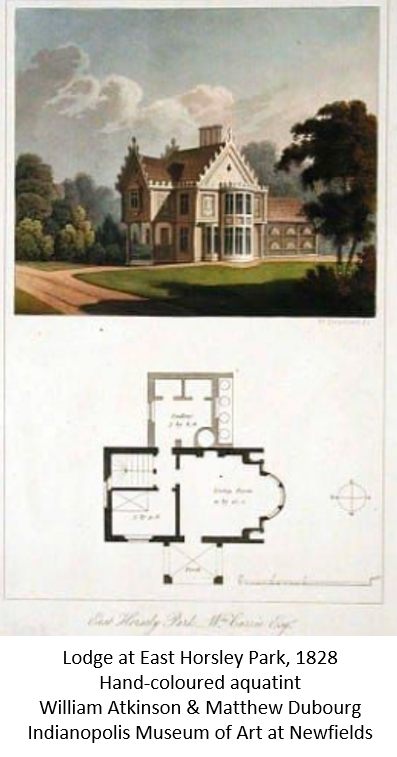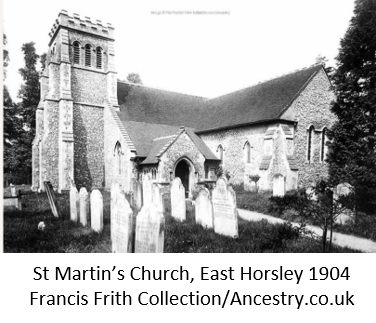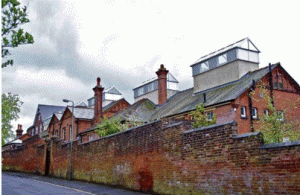peter simmonds
Subject : Peter Simmonds (b 1802 – d 1881)
Researcher : Margaret Rose
Couple work for Earl of Lovelace on his East Horsley Estate
Peter Simmonds and his wife were in the right place at the right time to become employees on the Horsley Estate owned by the Earl of Lovelace, Lord Lieutenant of Surrey.
Peter was born in Ripley, Surrey on 25 June 1802 and baptised there exactly a month later 1. He  was the last child of Richard and Hannah (or Ann) Simmonds, as his father passed away just over seven months later in February 1803 2, 3.
was the last child of Richard and Hannah (or Ann) Simmonds, as his father passed away just over seven months later in February 1803 2, 3.
Records from around this time are sketchy, so it has not been possible to discover how Peter, his mother and family were able to manage over the following 25 years.
However, Peter was living in Streatham, Surrey, when aged 26, he married local girl Sarah Briggs, 25, on 3 March 1828 4, 5.
Peter and Sarah do not appear to have had any children. By the time of the 1841 Census, they were living in East Horsley, Surrey, a short distance from Peter’s birthplace of Ripley 6. Also living with them was Sarah’s 15-year-old nephew Henry Briggs.
 Other than saying Peter was employed as an agricultural labourer, this Census gave no information about where he was working.
Other than saying Peter was employed as an agricultural labourer, this Census gave no information about where he was working.
A tithe map of the East Horsley area drawn up in 1846 revealed that Peter had a small plot of land for a pigsty and garden for his own use, located opposite Park Lodge 7.
Horsley Towers
 Five years later, the 1851 Census confirmed that Peter, Sarah and nephew Henry were living in Park Lodge on the Horsley Towers estate of William King, the Earl of Lovelace, Lord Lieutenant of Surrey, who had moved there in 1845 after giving up his nearby Ockham Park seat 8, 9.
Five years later, the 1851 Census confirmed that Peter, Sarah and nephew Henry were living in Park Lodge on the Horsley Towers estate of William King, the Earl of Lovelace, Lord Lieutenant of Surrey, who had moved there in 1845 after giving up his nearby Ockham Park seat 8, 9.
The Earl’s wife was Ada Lovelace, daughter of the poet Lord Byron, whose work as a mathematician with inventor Charles Babbage led her to being named as probably the world’s first computer programmer 10.
The Census said that the Earl of Lovelace’s estate was ‘occupying about 850 acres of land employing 28 labourers’. Both Peter and his nephew Henry Briggs were farm labourers there, and Peter’s wife Sarah was the ‘gate keeper’, Park Lodge being the main entrance to the estate.
Wife Sarah and nephew Henry succumb to illness
This did not last long, as Sarah passed away from breast cancer in September 1854 in East Horsley, aged 52 11. Her nephew Henry witnessed her death, and it was not long before his health also declined. By 1861 Henry was an inmate of the Guildford Union Workhouse, where he passed away that August from phthisis (tuberculosis), aged only 35 12, 13.
Final fourteen years in the Workhouse
Widower Peter was therefore alone at the time of the 1861 Census, now lodging in East Horsley with a fellow-labourer and his family 14. He was in his 60s, and by late 1867 was forced into the Guildford Union Workhouse, probably also for health reasons 15. Although there are no available admission records to show exactly when or why this was, the Guildford Union Poor Law Accounts indicated that Peter became a permanent inmate around this time. The 1871 Census confirmed this, and with no immediate family to help him, it seems certain that Peter was destined to be a long-term resident 16.
 The 1881 Census showed that nothing had changed, and just eight days after that Census, Peter passed away in the Workhouse on 11 April from ‘decay of age’, aged 78 17, 18. Like his wife Sarah more than 26 years before, and his nephew 20 years previously, Peter was buried at East Horsley’s St Martin’s Church 19, 20, 21.
The 1881 Census showed that nothing had changed, and just eight days after that Census, Peter passed away in the Workhouse on 11 April from ‘decay of age’, aged 78 17, 18. Like his wife Sarah more than 26 years before, and his nephew 20 years previously, Peter was buried at East Horsley’s St Martin’s Church 19, 20, 21.
April 2023, updated October 2025
Editor: Mike Brock
We’d love to hear from you if you have enjoyed reading this biography.
Please contact us by email: spikelives@charlotteville.co.uk
Sources and References
Original Surrey parish and Guildford Union accounts (for 1864-1871 only) are available at the Surrey History Centre, Woking. Digitised parish records were sourced through Ancestry.co.uk. A complete list of references and sources may be found here: Peter Simmonds references
 Spike Lives is a Heritage project that chronicles the lives of inmates, staff and the Board of Guardians of the Guildford Union Workhouse at the time of the 1881 Census. The Spike Heritage Museum in Guildford offers guided tours which present a unique opportunity to discover what life was like in the Casual/Vagrant ward of a Workhouse. More information can be found here
Spike Lives is a Heritage project that chronicles the lives of inmates, staff and the Board of Guardians of the Guildford Union Workhouse at the time of the 1881 Census. The Spike Heritage Museum in Guildford offers guided tours which present a unique opportunity to discover what life was like in the Casual/Vagrant ward of a Workhouse. More information can be found here
